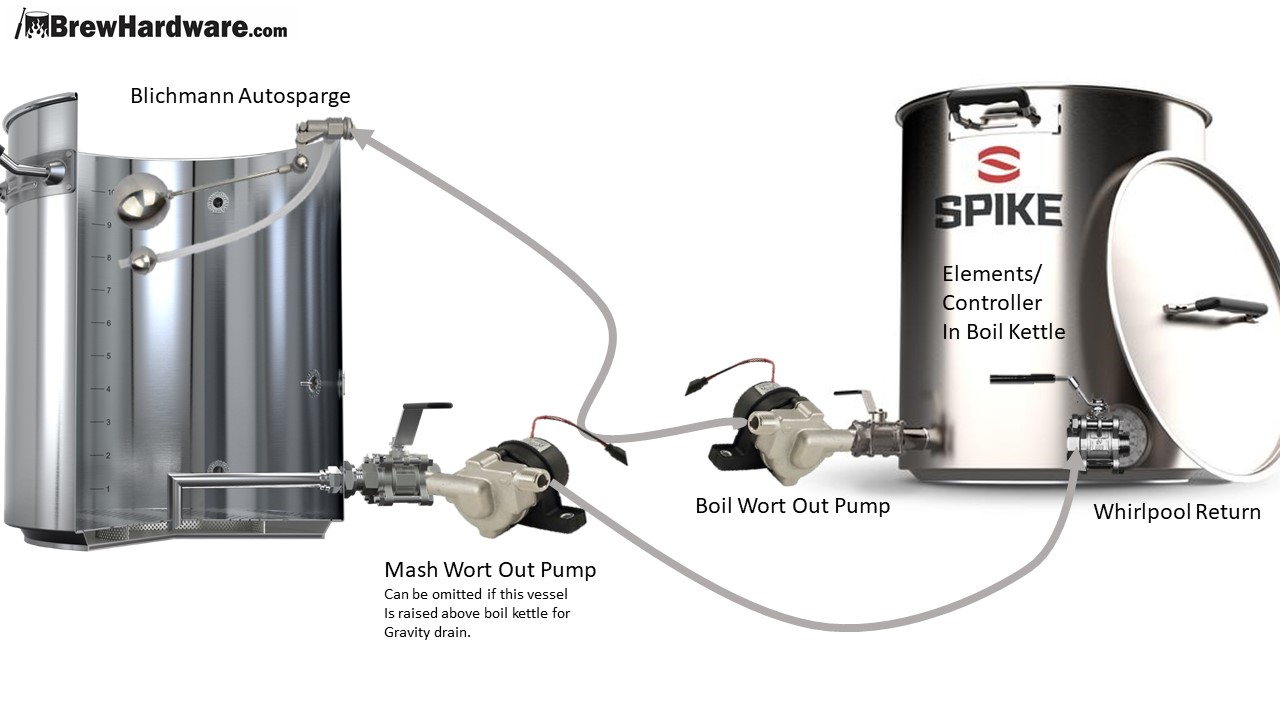A kettle RIMS is a 2-vessel system that uses a dedicated Mash/Lauter tun and a dedicated Boil kettle. Operationally, it is considered a full volume mash, no sparge process in the way that many BIAB (Brew in a Bag/Basket) systems operate. The main difference is that the total volume of the mash is split nearly equally between the two vessels. The flow is continuous in a big loop and either requires one pump and one gravity flow or two pumps if the vessels are placed at the same height level. The Boil Kettle is the only vessel being actively heated and it is almost always electric.
Pros as compared to a 3-vessel system:
- One less vessel to buy and clean (smaller footprint as well)
- Generally faster at system startup and step mash ramps because less mass/volume needs to be heated.
- Slightly less complicated to operate.
- Shorter brew day due to faster startup heating and no sparging.
Cons as compared to a 3-vessel system:
- Lower mash/lauter efficiency. The lack of a sparge generally lowers mash/lauter efficiency from about 85-90% to about 70-75%
Pros as compared to a Single-vessel system:
- Marginally clearer wort into the boil kettle (when they system is operated perfectly. This would include recirculating the mash with the boil kettle out of the loop just after dough in (which is not shown in the slides below)
- Can generally accommodate a larger batch size once the ability or desire to hoist a large bag or basket out is exceeded. This is generally reached at around the 15 to 20 gallon batch size or slightly smaller if no overhead lifting point can be rigged.
Cons as compared to a Single-vessel system:
- One extra vessel to buy and clean
- Potentially one extra pump if you build it as a single tier system.
- Slightly slower heat up times due to more heat loss out of two vessels and longer tubing.





|
|
|